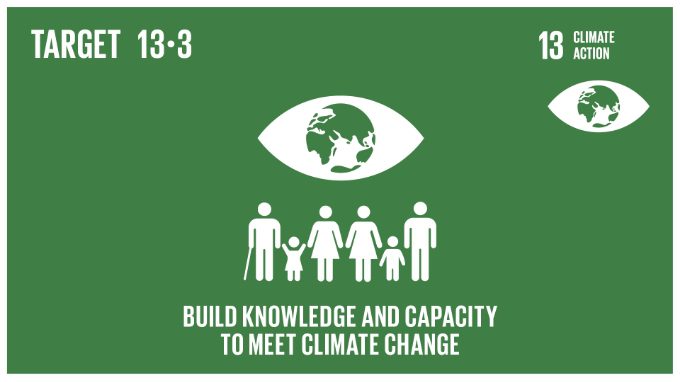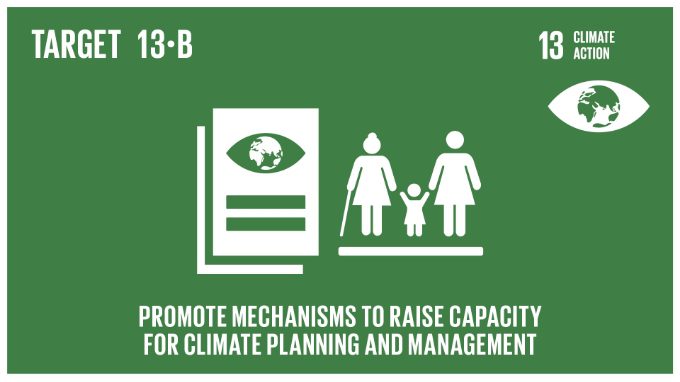Overview:
Climate change is a real and undeniable threat to our entire civilization.The effects are already visible and will be catastrophic unless we act now. Through education, innovation and adherence to our climate commitments, we can make the necessary changes to protect the planet. These changes also provide huge opportunities to modernise our infrastructure which will create new jobs and promote greater prosperity across the globe.

International Progress 2023:
The world is on the brink of a climate catastrophe and current actions and plans to address the crisis are insufficient. Without transformative action starting now and within this decade to reduce greenhouse gas emissions deeply and rapidly in all sectors, the 1.5°C target will be at risk and with it the lives of more than 3 billion people.
Failure to act leads to intensifying heatwaves, droughts, flooding, wildfires, sea-level rise, and famines. Emissions should already be decreasing now and will need to be cut almost by half by 2030 – a mere seven years from now. To combat climate change and its impacts by 2030, urgent and transformative action is needed to meet the commitments under the Paris Agreement across mitigation and adaptation efforts.
Targets —
-

Target 13.1
The number of deaths and missing persons due to disasters per 100,000 population has steadily decreased from 1.64 during 2005-2015 to 0.86 during 2012-2021. The average disaster mortality stood at 47,337 in absolute terms in 2015-2021. However, the number of persons affected by disasters per 100,000 people rose from 1,198 during 2005-2015 to 2,113 during 2012-2021. The number of countries with national strategies for disaster risk reduction has increased from 55 in 2015 to 126 by the end of 2021. Based on this, a total of 118 countries have reported having some level of policy coherence with other global frameworks, such as the 2030 Agenda and the Paris Agreement.
-

Target 13.2
Global temperatures have already hit 1.1°C, rising due to increasing global greenhouse gas emissions, which reached record highs in 2021. Real-time data from 2022 show emissions continuing an upward trajectory. Instead of decreasing emissions as required by the target to limit warming, carbon dioxide levels increased from 2020 to 2021 at a rate higher than the average annual growth rate of the last decade and is already 149% higher than pre-industrial levels. Projected cumulative future CO2 emissions over the lifetime of existing and currently planned fossil fuel infrastructure exceed the total cumulative net CO2 emissions in pathways that limit warming to 1.5°C (>50%) with no or limited overshoot.
-

Target 13.3
An analysis of 100 national curriculum frameworks reveals that nearly half (47%) do not mention climate change. In 2021, despite 95% of teachers recognizing the importance of teaching about climate change severity, only one-third are capable of effectively explaining its effects in their region. Additionally, 70% of young people can only describe the broad principles of climate change in 2022.
-

Target 13.a
According to the OECD, total climate finance provided and mobilised by developed countries for developing countries amounted to $83.3 billion in 2020, a 4% increase from 2019, but still short of the $100 billion target. Climate finance remains primarily targeted to mitigation; however, adaptation finance continues to lag, with international finance flows to developing countries 5-10 times below estimated needs.
Ireland’s
Progress 2023:
Ireland has the second highest greenhouse gas emissions per person in the EU (EPA, 2023). Nevertheless, the internationally ground-breaking climate law – the Climate Action and Low Carbon Development (Amendment) Act 2021 – legally compels the Irish government to reduce Ireland’s 2018 baseline of greenhouse gas emissions by 51% by 2030, and to reach net zero emissions by 2050. This task is underpinned by three carbon budgets that have been set for 2021-2025, 2026-2030 and 2031-2035, each of which contain sectoral emissions ceilings (SECs) for various parts of the economy and aim to set Ireland on a pathway to climate neutrality by 2050. Nearly half (47%) of Ireland’s Carbon Budget for 2021-2025 has been used in the first 2 years. An extremely challenging annual reduction of 12.4% is required for each of the remaining years if Ireland is to stay within the Budget.
Ireland’s greenhouse gas emissions decreased by 1.9% between 2021 and 2022 but transport emissions actually increased by a huge 6% and Ireland exceeded its 2022 annual limit under the European Union’s Effort Sharing Regulation Overall higher transport activity – both private cars and freight transport – is eroding the impact of electric vehicles.
“Current decarbonisation actions are being outpaced by increased energy demand across the economy and dependence on fossil fuels for energy generation. A significant increase in Transport emissions in 2022 highlights the fact that a growing economy, with high employment, will continue to produce emissions if we do not break the link and decouple emissions from increased activity by using cleaner and alternative sources of energy.”
EPA
There is however increased Government effort to see more and more homes retrofitted with the introduction of grants for energy upgrades. Additionally, new nationwide solid fuel regulations that ban the use of smoky fuel in home heating have contributed to reduced emissions in this area.
Targets —
-

Strengthen resilience and adaptive capacity to climate-related hazards and natural disasters in all countries.
CSO data
Claim: Achieving
13.1.1 The Sendai Framework data readiness review – Global summary report reviews the availability of data in Ireland to report against the indicators recommended to measure the global targets of the Sendai Framework, and identify current gaps.
13.1.2 The National Adaptation Framework (NAF) sets out the national strategy to reduce the vulnerability of Ireland to the negative effects of climate change and to avail of positive impacts.
13.1.3 100% of Ireland’s local governments adopt and implement local disaster risk reduction strategies.
13.1.1
Number of deaths, missing persons and directly affected persons attributed to disasters per 100,000 population
13.1.2
Number of countries that adopt and implement national disaster risk reduction strategies in line with the Sendai Framework for Disaster Risk Reduction 2015–2030
13.1.3
Proportion of local governments that adopt and implement local disaster risk reduction strategies in line with national disaster risk reduction strategies
-

Integrate climate change measures into national policies, strategies and planning.
CSO data
Status: Greenhouse gas emissions rising
13.2.1 Ireland’s first statutory National Adaptation Framework (NAF) was published on 19 January 2018. The NAF sets out the national strategy to reduce the vulnerability of the country to the negative effects of climate change and to avail of positive impacts. The NAF was developed under the Climate Action and Low Carbon Development Act 2015.
13.2.2 In 2021, Ireland’s GHG emissions were 61.53 Mt CO2eq, which was 4.7% higher than 2020.
13.2.1
Number of countries with nationally determined contributions, long-term strategies, national adaptation plans, strategies as reported in adaptation communications and national communications
13.2.2
Total greenhouse gas emissions per year
-

Improve education, awareness- raising and human and institutional capacity on climate change mitigation, adaptation, impact reduction and early warning.
CSO data
Claim: Achieving
13.3.1 At a national level, information relating to SDG 13.3.1 is outlined in the Second National Strategy on Education for Sustainable Development: ESD to 2030, co-sponsored by the Department of Further and Higher Education, Research, Innovation and Science (DFHERIS), the Department of Education (DoE) and the Department of Children, Equality, Disability, Integration and Youth (DCEDIY). ESD to 2030 is aligned with UNESCO’s Framework for ESD for 2030 setting out five key priority areas for action.
13.3.1
Extent to which (i) global citizenship education and (ii) education for sustainable development are mainstreamed in (a) national education policies; (b) curricula; (c) teacher education; and (d) student assessment
-

Implement the commitment undertaken by developed-country parties to the United Nations Framework Convention on Climate Change to a goal of mobilizing jointly $100 billion annually by 2020 from all sources to address the needs of developing countries in the context of meaningful mitigation actions and transparency on implementation and fully operationalize the Green Climate fund through its capitalization as soon as possible.
13.a.1
Amounts provided and mobilized in United States dollars per year in relation to the continued existing collective mobilization goal of the 0 billion commitment through to 2025
-

Promote mechanisms for raising capacity for effective climate change-related planning and management in least developed countries, including focusing on women, youth and local and marginalized communities.
CSO data
Claim: Achieving
13.b.1 Eight countries in the category ‘least developed’ (LDCs) received specialised support through Ireland’s Official Development Assistance (ODA). Support of €64.15m was also provided in 2017 to the LDCs fund and other partners, according to data from the Department of Foreign Affairs.
13.b.1
Number of least developed countries and small island developing States with nationally determined contributions, long-term strategies, national adaptation plans, strategies as reported in adaptation communications and national communications







